We receive thousands of questions every month at The Baseline of Health® Foundation and Baseline Nutritionals®, ranging from oil pulling to philosophical dissertations on why germs don’t exist. After ignoring the spam, the requests to join network marketing companies, the many, many requests for me to play personal physician for free, and all of those questions that are straight forward and can be handled by staff, that still leaves several hundred questions each month that have to be run through me to either provide guidance or actually craft the answer for staff to use. And out of all those questions, as we do pretty much once a year, I’ve selected some, on a variety of topics, that I think might be most interesting to share.
Oil pulling
The newsletter I wrote back in 2011 on oil pulling has turned out be one of the most popular newsletters I’ve ever written. It also has generated a tremendous amount of commentary and questions. In fact, even while putting this newsletter together, a question about what time of day is best for oil pulling just crossed my desk–and this is two years after the newsletter was published. In any case, I’ve pulled out a few of the more interesting oil pulling questions and listed them below. But before we get to them, a quick anecdote.
Until this spring, it had been 20 years since I had last seen a dentist. I don’t say this to brag, but as a point of fact. For about that long, I have been working an average of 14 hours a day, seven days a week, and getting time away for anything has been difficult. Add in the fact that my wife changed our dentist some years ago, which just seemed to complicate things, and–bottom line–I just never got around to going until this spring. Again, not recommended–just a statement of fact. During those 20 years, however, I never had any issues such as bleeding gums or any pain, and I have:
- Brushed regularly.
- Flossed twice a day.
- Taken my own proteolytic enzyme formulas to dissolve plaque and taken my own ASU based formula to nip any periodontal disease in the bud.
- And oil pulled with sesame oil (fortified with tea tree oil and d-Limonene) for 20 minutes every morning.
The net result is that when I went for my first cleaning in almost 20 years, the hygienist was dumbfounded. She said that it looked like it had been six months at most since my last cleaning.
PS: Although what I was doing was obviously working, I’ll be going for a cleaning every six months moving forward. Nevertheless, I think the anecdote speaks to the value of the regimen I’ve been on, including the oil pulling.
Oil Pulling Question #1
I have six amalgam fillings. Will oil pulling cause mercury vapors? I can’t afford to have my fillings removed. Also, I understand that oil pulling causes fillings to fall off. Can’t have that! I have moderate to severe periodontal disease and am trying to save the remaining teeth I have. One last thing: every time I do oil pulling, I get dizzy. I use coconut oil and am not allergic to it. What on earth is that all about?
Answer
There is no detox action to oil pulling. It will not pull mercury vapors out of your fillings. It will not make your fillings fall out — no more than eating salad with oil dressing every day makes your fillings fall out. There is nothing inherent in oil pulling that would cause dizziness. Perhaps you’re just working the swishing too hard. Try pulling for 5 minutes a little less vigorously, get comfortable with it, and then build up slowly. If you still get dizzy at 5 minutes, try a different oil. As for coconut oil, there shouldn’t be any problem with using it, but it doesn’t have anywhere near as extensive a history for oil pulling as do sesame and sunflower oils, which are what I recommend.
Oil Pulling Question #2
I pulled using coconut oil for a month and my teeth became sensitive and my gums started to bleed. I did not have these problems before oil pulling. Do these symptoms have to do with the detoxing process? Thanks for any help on this.
Answer
There is nothing inherent in oil pulling that causes bleeding gums. In fact, many people use oil pulling specifically to heal bleeding gums. That said, anything is possible. For one thing, you may be having an allergic reaction to coconut oil. Try using a different oil. As for detoxing, as the newsletter on oil pulling points out, there is probably no detoxing involved in oil pulling–just the killing of harmful bacteria in the mouth and beneath the gum line. Incidentally, although many people now use coconut oil for oil pulling, as you will note from my newsletter on oil pulling, it’s not one of the oils I recommend. Not so much for any particular reason–although questions like the last two (and several others if you hunt through the comments) give one pause–but because it doesn’t have anywhere near the same track record as sunflower and especially sesame oil. Also, since coconut oil is not liquid at room temperature, it’s much harder to mix with tea tree oil and d-Limonene as I recommended in the newsletter.
Oil Pulling Question #3
If you watch this video clip on self lymph massage, you may agree with me that oil pulling does detox the whole body.1 http://www.youtube.com/watch?v=QA-wi0d7-Ro When we do oil pulling, we may be moving the same muscles. We therefore are moving the lymph. In my opinion, lymphatic drainage is a form of detox. Therefore, oil pulling = detoxing the whole body.
Answer
If true, then prolonged water swishing would work as well–but there is no evidence it does. That’s not to say that there is no benefit to lymph massage, just, that based on the available evidence, oil pulling does not provide that benefit.
Digestive Enzymes
As I have stated before, personally I probably use more digestive enzymes than any other single supplement. If I had one single supplement to take, it would probably be digestive enzymes with every meal. I think they’re that important.
Question
My mom has chronic pancreatitis, and I am looking for the adequate digestive enzyme product in her situation. Why do you recommend so much more protease active units (33 000 HUT) than lipase active units (5 000 LU) in your digestive enzyme formula? Pancreatic juice plays a key role in the digestion of all macronutrients but is most crucial for lipid digestion. Protein digestion begins in the stomach, and starch digestion begins in the mouth, which continues with pancreatic juice afterwards. The doctor prescribed my mom a digestive enzyme which has 10 000 units of lipase and just 600 units of protease. I assume the higher value of lipase units would be recommended just for people that have chronic pancreatitis?
Answer
The difference in active units may not be as much as you think. HUT and LU measure entirely different things. The protease and lipase in the digestive enzyme formula are actually balanced according to the diets that most people eat. That said, the numbers in the activity units of different enzymes are not connected. It’s an apples and oranges thing. HUT’s and LU’s are not one-to-one comparable in any sense of the word. To answer your question more fully, however, we’re going to have to get involved in some chemistry to clarify the difference.
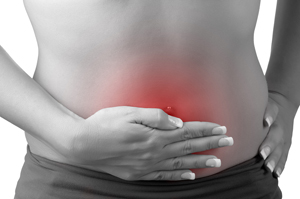 Protease (HUT) stands for “Hemoglobin unit on a Tyrosine basis.” The activity of many protease enzymes is measured in using FCC HUT. (Incidentally, FCC stands for “Food Chemicals Codex,” the industry standard.) This assay is based upon the hydrolysis of denatured hemoglobin. One FCC HUT unit of proteolytic (protease) activity is defined as that amount of enzyme that produces, in one minute under the specified conditions, a hydrolysate whose absorbance at 275nm is the same as that of a solution containing 1.10 g per mL of tyrosine in 0.006N hydrochloric acid.
Protease (HUT) stands for “Hemoglobin unit on a Tyrosine basis.” The activity of many protease enzymes is measured in using FCC HUT. (Incidentally, FCC stands for “Food Chemicals Codex,” the industry standard.) This assay is based upon the hydrolysis of denatured hemoglobin. One FCC HUT unit of proteolytic (protease) activity is defined as that amount of enzyme that produces, in one minute under the specified conditions, a hydrolysate whose absorbance at 275nm is the same as that of a solution containing 1.10 g per mL of tyrosine in 0.006N hydrochloric acid.- Lipase (FCCLU) stands for “Food Chemical Codex Lipase unit.” One FCC Lipase Unit is defined as that quantity of enzyme that will liberate the equivalent of one µmol (micromole) of acid (H+) per minute from the substrate, under the conditions of the assay. The assay is based on a five-minute hydrolysis of an olive oil substrate at pH 6.5 and 30°C. The fatty acids released on hydrolysis of the glycerol esters are determined by titration with sodium hydroxide.
As you can see, they are measuring entirely different things and their numbers have no correspondence to each other. Again, we’re talking apples and oranges. So, saying that 33,000 HUT is “so much more” than 5,000 LU is not really accurate.
That said, the pancreas secretes a group of enzymes that collectively have the capacity to reduce virtually all digestible macromolecules into forms that are capable of (or nearly capable of) being absorbed. Specifically, pancreatic juice contains three major groups of enzymes that are critical to efficient digestion. These include:
- Proteases. Unless proteases are present when a meal is consumed, digestion of proteins is initiated by pepsin in the stomach, with the bulk of protein digestion taking place in the small intestine as the result of pancreatic proteases. Several proteases are synthesized in the pancreas and secreted into the lumen of the small intestine. The two major pancreatic proteases are trypsin and chymotrypsin.
- Pancreatic amylase and carbohydrase help to break down carbohydrates and starches.
- Pancreatic Lipase. The major form of dietary fat is triglyceride. A triglyceride molecule cannot be directly absorbed across the intestinal mucosa. It must first be digested into 2-monoglyceride and two free fatty acids. The enzyme that performs this hydrolysis is pancreatic lipase, which is delivered into the lumen of the gut as a constituent of pancreatic juice. Note: sufficient quantities of bile salts must also be present in the lumen of the intestine in order for lipase to efficiently digest dietary triglyceride and for the resulting fatty acids and monoglyceride to be absorbed. This means that normal digestion and absorption of dietary fat is critically dependent on secretions from both the pancreas and liver.
- Miscellaneous enzymes. In addition to the major groups of proteases, lipase, and amylase, the pancreas produces a host of other digestive enzymes, including ribonuclease, deoxyribonuclease, gelatinase, and elastase.
Now, as to why your doctor prescribed enzymes that are predominantly lipase as opposed to a more balanced broad spectrum supplement, you would have to ask your doctor. There must be something in your tests that would indicate that was necessary. Note: high triglycerides are often an indicator of pancreatitis. If the digestion of fats is indeed a particular problem for you, you might want to ask your doctor if additional bile salts might be helpful.
For more on the pancreas and pancreatitis, check out https://www.jonbarron.org/article/pancreas-and-digestion.
Question
Could you explain how enzymes help with hiatal hernias? I understand all the other benefits you’ve laid out, but how do enzymes physically move the whole stomach back down below the esophageal sphincter? Do you have any links to more information on this connection?
Answer
Actually, that’s not quite what I said. What I said was that enzymes help with the acid reflux associated with hiatal hernias, not the hernia itself. There are physical adjustments, however, that can help with the actual problem. Check out https://www.jonbarron.org/article/overview-digestive-system. And for more on how proteins, fats, and carbohydrates are actually broken down in the digestive tract, check out https://www.jonbarron.org/article/physiology-small-intestine-part-1
Juicing and Fasting
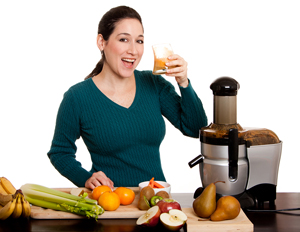 Water fasting and juice fasting, like detoxing–and heck, if done correctly, they are forms of detoxing–are the Rodney Dangerfield of alternative health: they “don’t get no respect.” They are also extremely misunderstood by the medical community, which continually attacks them based on a total misunderstanding of how they work and what they do. Typical complaints from “so called” health experts is that juices are bad because they don’t contain fiber and protein2 Erika Stalder. “Nutrition Experts Explain Why Juice Cleanses Are Pointless” Business Insider. Jun. 5, 2013, (Accessed (18 Aug 2013.) http://www.businessinsider.com/nutrition-experts-juice-cleanses-pointless-2013-6 and they don’t have the same vitamin levels as whole fruit and vegetables.3 Dina Spector. “The Definitive Answer To 20 Of Your Biggest Health Questions.” Business Insider. Aug. 14, 2013. (Accessed 18 Aug 2013.) http://www.businessinsider.com/health-myths-debunked-2013-8#is-drinking-fruit-juice-as-good-for-you-as-eating-fruit-9
Water fasting and juice fasting, like detoxing–and heck, if done correctly, they are forms of detoxing–are the Rodney Dangerfield of alternative health: they “don’t get no respect.” They are also extremely misunderstood by the medical community, which continually attacks them based on a total misunderstanding of how they work and what they do. Typical complaints from “so called” health experts is that juices are bad because they don’t contain fiber and protein2 Erika Stalder. “Nutrition Experts Explain Why Juice Cleanses Are Pointless” Business Insider. Jun. 5, 2013, (Accessed (18 Aug 2013.) http://www.businessinsider.com/nutrition-experts-juice-cleanses-pointless-2013-6 and they don’t have the same vitamin levels as whole fruit and vegetables.3 Dina Spector. “The Definitive Answer To 20 Of Your Biggest Health Questions.” Business Insider. Aug. 14, 2013. (Accessed 18 Aug 2013.) http://www.businessinsider.com/health-myths-debunked-2013-8#is-drinking-fruit-juice-as-good-for-you-as-eating-fruit-9
But these issues totally miss the point. It would be like criticizing penicillin because it has none of the B vitamins or fiber found in bread–on which penicillin was first found growing. But then you’re not taking penicillin for its vitamin content, are you?
In fact, as I have explained before, there is a great deal of scientific support for the health benefits of fasting, which have little to do with vitamins and minerals. And as far as nutrients go, it depends on which fruits and vegetables you look at and which nutrients you check for. For example, you can get far higher levels of carotenoids and even calcium from drinking carrot juice, as opposed to eating whole carrots.
Question
Can someone with a slight hypothyroid issue benefit from a raw juice healing diet? I love raw green juices, but after a few days of a raw green juice for breakfast, the raw kale and spinach bother my thyroid. I can juice carrot, cucumber, celery, romaine lettuce, and beet in any combination instead. But is all raw safe for hypothyroid?
Answer
Juices in general are not a problem, but raw spinach and kale contain substances called goitrogens that can temporarily decrease your body’s ability to absorb iodine from foods, which is problematic if you suffer from hypothyroidism. Other goitrogenic foods include the cruciferous vegetables such as broccoli and cauliflower…and soy foods.
Question
What are your thoughts on daily intermittent fasting compared to multi-day fasting? I believe when you are speaking of fasting you are referring to multi-day fasts. However, I am currently experimenting with a 16-hour fast /8-hour feast daily cycle. I believe the Warrior Diet also suggests a 20-hour fast / 4-hour feast cycle. Do you believe that these types of fasts are just as beneficial over the long term?
Answer
My preference is for one day, three day, and 5-7 day fasts. As for intermittent fasting, studies have shown that one day on and one day off fasts can provide benefits — but mostly in terms of weight loss (although blood sugar and triglyceride levels will benefit too).4 Dina Spector. “THE FAST DIET: Get Thin Quick By Starving Yourself Two Days A Week.” Business Insider. March 16, 2013. (18 Aug 2013) http://www.businessinsider.com/the-science-behind-the-fast-diet-2013-3 In terms of cleansing, however, they are not as effective. Intermittent fasting on a shorter cycle–less than one day–as you described, would run counter to the body’s circadian rhythms and would likely produce fewer benefits. In the end, it depends on what benefits you’re after.
Question
I drink (no sugar added) Northland pomegranate/cranberry juice, diluted in half with water and over ice. Is this a type of juice I should be concerned about?
Answer
Since there’s no added sugar, and you are diluting it, there’s nothing to be “concerned” about. But as I have often said, there’s a universe of difference between a bottle of commercial juice and juice you squeeze yourself. Within minutes of juicing, many of the nutrients and enzymes start to break down, rendering the benefits far less potent. In many ways, bottled juice is closer to sweetened water than fresh juice. Also, any time that bottled juices choose to add isolated vitamins–such as A, C, and E, as in the Northland product–that’s a strong signal that you’ve moved a long way from the power of freshly squeezed juices.
Cleansing for Seniors and People with Medical Conditions
When it comes to upsetting the medical community, detoxing can be thought of as “juicing on steroids.” Probably no issue in alternative health seems to confuse the medical community more than “detoxing.” Every few months, they are seeking to debunk it. And yet the medical community uses various methods for detoxing organs and systems in the body as standard medical practice. I guess the medical community doesn’t understand the meaning of the old adage, “What’s good for the goose is good for the gander.”
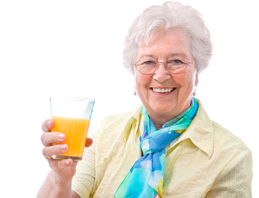 Question
Question
Do you recommend cleansing for me? I’m 69 years old, 100 lbs. overweight, diabetic, have hypertension, chemically-induced asthma, have NASH/cirrhosis, sarcoidosis, type 2 diabetes, low thyroid. I’m on meds for diabetes, low thyroid, and hypertension. I need your help; what do you recommend? Thanks for your help!
Answer
For obvious legal reasons, we cannot diagnose or prescribe for specific medical conditions–merely provide information. With that in mind, many senior citizens with severe medical problems have used the Baseline of Health detoxing program to significantly improve their health and dramatically or even completely eliminate their prescription medicines. Check with your doctor to see if he/she will work with you to incorporate elements of the Baseline program into your own life and to monitor subsequent changes that might be required in your pharmaceutical regimen.
Question
Can a person with Hepatitis C (genotype 1a) do a liver cleanse?
Answer
For obvious legal reasons, we cannot diagnose or prescribe for specific medical issues–merely provide information. That said, you might find this story about detoxing while battling Hepatitis C.
Cholesterol
When it comes to cholesterol, much nonsense is disseminated. And even what you think you may know–or what you believe the medical community “knows”–is actually being hotly debated within the medical community itself. Nevertheless, the issue holds an almost obsessive fascination for most of our readers. And for that, you can thank the mainstream media…and, of course, pharmaceutical advertising.
Question
You talk about one in 500 being genetically predisposed to high cholesterol. What about the LDL particle size we are reading about? If the particle size is the right kind, why would these people need statins?
Answer
The genetic predisposition is specific to LDL cholesterol. Here are the details. Cholesterol is delivered to cells via the bloodstream. Normally, the tiny particles of LDL cholesterol attach to ‘receptor’ sites on the targeted cells and are then absorbed. A gene on chromosome 19, called the LDLR gene, controls the production of these receptors. Familial hypercholesterolemia is due to a mutation of the LDLR gene that changes the way the receptors develop, either in number or structure. This means that LDL cholesterol is not well absorbed into cells, and remains circulating in the blood. The bottom line is that the genetic problem causes LDL numbers in particular to rise.
Fiber
At heart, fiber is a carbohydrate like sugar, but more complex. It is composed of elongated, threadlike, indigestible structures and is found in fruits, vegetables, and grains. It has no calories because the body cannot absorb it. Fiber has long been recognized as one of the best food ingredients for maintaining bowel regularity and preventing constipation. Consuming fiber reduces transit time and results in a more thorough evacuation of waste materials from the bowel. Bottom line: fiber improves all aspects of colon function. There are two types of fiber: insoluble and water soluble (and this is where things start to get interesting).
Question
I use a tbsp of wheat bran natural fiber in cereal or porridge every day! Does this provide enough fiber?
Answer
It’s recommended to consume 14 g of fiber for every 1000 calories you consume. That means if you consume an average of 2500 calories a day, you should be consuming 35 g of fiber. There are 2 g of fiber in every tbsp of wheat bran, so obviously 1 tbsp of wheat bran isn’t going to get you there. But you need to factor in how much fiber you’re getting with the food you eat.
Calcium
I’m not a big fan of calcium supplementation for most people, and I have repeatedly pointed out the dangers of too much calcium. Although a necessary nutrient, it doesn’t perform as promised when taken in large amounts for bone health, and a number of studies now indicate that it may be problematic when it comes to heart health. You can get all the calcium you need from a healthy diet–and without consuming large amounts of dairy.
Question
I’ve heard that calcium from greens is not absorbed so well. Greens just seem good at keeping us healthy. I wonder what else is not provided or does not absorb so well from greens. Maybe the body is better evolved to eat greens and has come to detect greens and not absorb anything that may cause harm? Worth looking then at what else is not absorbed so well from greens?
Answer
Actually calcium in most greens is well absorbed. Greens provide most of the cofactors required for absorption, other than vitamin D. For example, greens are primary sources of magnesium and vitamin K–and, of course, are alkalinizing to the body, thus helping keep calcium in your bones.
Question
When I don’t supplement with calcium, I get a lot of muscle cramps in my legs during exercise, even at light and moderate intensity. What to do? My serum calcium level is borderline low (2 instead of 2.20, if I remember correctly). My vitamin D is “ideal” according to my doctor, i.e. 148 (max was 150), possibly too high?
Answer
The current thinking on muscle cramps is dismissive of theories relating to hydration and electrolytes and instead focuses on muscle fatigue and contracting an already shortened muscle as the direct causes of cramping.5 Bentley, S. Exercise-Induced Muscle Cramp. Proposed Mechanisms and Management. Sports Med 1996 Jun;21(6):409-420. http://www.ncbi.nlm.nih.gov/pmc/articles/PMC3445088/ ,6 Schwellnus, MP, Derman EW; Noakes TD. Aetiology of Skeletal Muscle “Cramps” During Exercise: A Novel Hypothesis. J Sports Sci 1997 Jun;15(3):277-85. http://www.ncbi.nlm.nih.gov/pubmed/9232553 ,7 Schwellnus, Martin P. Skeletal Muscle Cramps During Exercise. Phys Sports Med 1999. http://physsportsmed.org/doi/10.3810/psm.1999.11.1116 It goes on to implicate adaptive shortening in a muscle (a muscle that you work a lot in a shortened position and that you never get around to stretching) as increasing a muscle’s vulnerability to cramping. The theory implies that stretching is preventive medicine for cramping. In other words, as I have pointed out repeatedly when talking about exercise, regular, consistent stretching is a foundational component of any exercise routine.
That said, and based on your own personal experience, it’s probably not a good idea to totally dismiss proper hydration and electrolyte balance (including calcium) as contributing factors. You might also find this blog entry interesting. And in fact, subsequent research has demonstrated carnosine’s ability to block the accumulation of lactic acid that results from extreme physical exertion, often leading to muscle cramping and pain. And in fact, when I worked for several years with a professional cycling team, helping them with their nutritionals programs, they expressed that using my carnosine formula helped reduce cramping and muscle pain, improved endurance, and sped up recovery time.
And finally, heavy metal toxicity should not be forgotten as a possible contributing factor.8 Ferner, DJ. “Toxicity, Heavy Metals.” eMed. J. 2001 May 25;2(5): 1
Superfoods
Some people think that superfoods are merely whole food replacements for multivitamin pills. Not so. Superfoods are, in fact, whole foods that provide highly concentrated sources of nutrients that you cannot easily get from other foods…or supplements. Blue green algae, chlorella, flower pollen, rice bran, and Tahitian noni are examples. They each contain specific nutrients or properties–such as chlorella’s ability to detox your body, or flower pollen’s ability to shrink the prostate, or rice bran’s concentration of unique antioxidants–that cannot easily be replicated elsewhere.
Question
Hello, I would like to ask you for your opinion about brewer’s yeast, which in my view is one of the superfoods. 50% full amino acid proteins and high vitamins and some minerals …. how do you see it? There is no danger, in regard to quality or other possible risks during consumption (quantity). For example, it doesn’t promote Candida etc.
Answer
Yes, deactivated brewer’s yeast, can be a useful superfood…but with a caution.
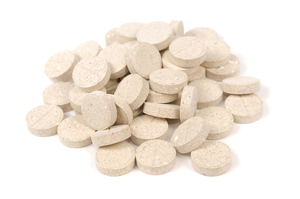 Brewer’s yeast has been implicated in several diseases such as atopic dermatitis, asthma (when inhaled by those engaged in brewing or baking), severe allergic reactions after drinking beer or malt beverages, and even Crohn’s disease, a severe inflammatory condition of the bowel. In Crohn’s disease, the response to the yeast is thought to be from reactions of A, M, and G antibodies (IgA, IgM, and IgG) rather than E-type antibodies (IgE or allergy antibodies).9 J. Van Den Bogaerde1, M. A. Kamm1, S. C. Knight. “Immune sensitization to food, yeast and bacteria in Crohn’s disease.” Alimentary Pharmacology & Therapeutics. Volume 15, Issue 10, pages 1647–1653, October 2001. http://onlinelibrary.wiley.com/doi/10.1046/j.1365-2036.2001.01032.x/full
Brewer’s yeast has been implicated in several diseases such as atopic dermatitis, asthma (when inhaled by those engaged in brewing or baking), severe allergic reactions after drinking beer or malt beverages, and even Crohn’s disease, a severe inflammatory condition of the bowel. In Crohn’s disease, the response to the yeast is thought to be from reactions of A, M, and G antibodies (IgA, IgM, and IgG) rather than E-type antibodies (IgE or allergy antibodies).9 J. Van Den Bogaerde1, M. A. Kamm1, S. C. Knight. “Immune sensitization to food, yeast and bacteria in Crohn’s disease.” Alimentary Pharmacology & Therapeutics. Volume 15, Issue 10, pages 1647–1653, October 2001. http://onlinelibrary.wiley.com/doi/10.1046/j.1365-2036.2001.01032.x/full
Truth be told, virtually all of the superfoods have similar problems because of their high protein content. Spirulina and chlorella, for example, are no exception. Many people are allergic to them. Proteins are what trigger antigens, not carbs or fats. The problem is that brewer’s yeast is higher on the allergen list than most, up there with dairy and soy.
Pathogen mutation
Increasing resistance to antiviral and antibacterial drugs is as predictable as rush-hour traffic in Los Angeles.
Question
Please clarify what I just read in your newsletter about wormwood and artemisinin. Does it mean that artemisinin is not effective and that wormwood is, or the other way around?
Answer
What I actually said was that because the drug, artemisinin, is a one dimensional component of wormwood, the malaria pathogen is able to evolve around it so that it is becoming less effective. Unfortunately, because artemisinin is a key component of what makes wormwood effective, this has also compromised the overall efficacy of wormwood in terms of combating pathogens. Although, previously, the malaria pathogen had not been able to evolve around the complexity of the whole herb, once scientists extracted a single component from it, it opened the door to undermining the effectiveness of wormwood itself. In other words, what the pathogen could not do on its own–evolve around a complex natural substance, wormwood–it is now likely to be able to accomplish thanks to the pharmaceutical companies. Make sense?
Follow up question
That makes sense. I wonder if it remains as effective against cancer.
Follow up answer
Cancer cells are both the same as and different from other pathogens. They are the same both because they have an agenda different from the body as a whole and because they definitely demonstrate an ability to develop workarounds when it comes to chemotherapy drugs and even the body’s own immune cells. That’s why chemotherapy drugs can be effective against a given cancer the first time they’re used, but ineffective when the cancer recurs. But what cancer cells haven’t demonstrated yet is the ability to swap genes with cancer cells in other people and learn from their experience–something bacteria and viruses are able to do. The bottom line is that wormwood’s effectiveness against cancer cells is likely to remain unchanged as any new cancer in your body has not acquired resistance from a previous exposure in someone else’s body.
Conclusion
As I have explained before, Baseline Nutritionals® (BN) and the Baseline of Health® Foundation (the Foundation) are actually two separate entities with two entirely separate sets of staff. BN is a company that sells my formulas online. Their staff provides customer service for the Baseline Nutrtionals products. The Foundation, on the other hand, sells no products and charges no money for access to its thousands of pages of information and hours of video and audio files. It is a non-profit 501(c)(3) charitable organization, and all of its staff and operations are funded entirely by donations from BN and me. In exchange, BN gets a shout out on the Foundation website and gets to make a statement at the head of every email announcing the posting of a new newsletter. Think of it like PBS where the corporate sponsors get to make their announcements at the beginning of every program. The Foundation itself has no marketing budget and depends on social media and word of mouth from readers such as you to spread the word. Thanks to you, jonbarron.org is now one of the most visited alternative health websites in the world, and by virtue of its subscribers–among whom are reporters and health editors from large media organizations around the world including Reuters, ABC, NBC, CBS, Fox News, Bloomberg News, the NY Times, the LA Times, The Chicago Sun-Times, health ministers from numerous countries, a number of people in the US government, scientists at NASA, and a large number of medical doctors and clinics–one of the most influential.
And with that, thank you for being part of the Baseline of Health family.
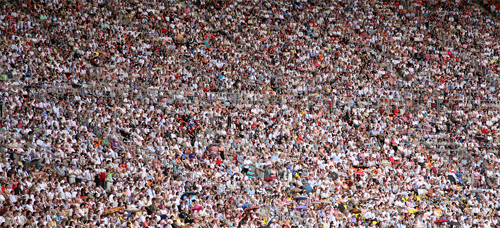
References
| ↑1 | http://www.youtube.com/watch?v=QA-wi0d7-Ro |
|---|---|
| ↑2 | Erika Stalder. “Nutrition Experts Explain Why Juice Cleanses Are Pointless” Business Insider. Jun. 5, 2013, (Accessed (18 Aug 2013.) http://www.businessinsider.com/nutrition-experts-juice-cleanses-pointless-2013-6 |
| ↑3 | Dina Spector. “The Definitive Answer To 20 Of Your Biggest Health Questions.” Business Insider. Aug. 14, 2013. (Accessed 18 Aug 2013.) http://www.businessinsider.com/health-myths-debunked-2013-8#is-drinking-fruit-juice-as-good-for-you-as-eating-fruit-9 |
| ↑4 | Dina Spector. “THE FAST DIET: Get Thin Quick By Starving Yourself Two Days A Week.” Business Insider. March 16, 2013. (18 Aug 2013) http://www.businessinsider.com/the-science-behind-the-fast-diet-2013-3 |
| ↑5 | Bentley, S. Exercise-Induced Muscle Cramp. Proposed Mechanisms and Management. Sports Med 1996 Jun;21(6):409-420. http://www.ncbi.nlm.nih.gov/pmc/articles/PMC3445088/ |
| ↑6 | Schwellnus, MP, Derman EW; Noakes TD. Aetiology of Skeletal Muscle “Cramps” During Exercise: A Novel Hypothesis. J Sports Sci 1997 Jun;15(3):277-85. http://www.ncbi.nlm.nih.gov/pubmed/9232553 |
| ↑7 | Schwellnus, Martin P. Skeletal Muscle Cramps During Exercise. Phys Sports Med 1999. http://physsportsmed.org/doi/10.3810/psm.1999.11.1116 |
| ↑8 | Ferner, DJ. “Toxicity, Heavy Metals.” eMed. J. 2001 May 25;2(5): 1 |
| ↑9 | J. Van Den Bogaerde1, M. A. Kamm1, S. C. Knight. “Immune sensitization to food, yeast and bacteria in Crohn’s disease.” Alimentary Pharmacology & Therapeutics. Volume 15, Issue 10, pages 1647–1653, October 2001. http://onlinelibrary.wiley.com/doi/10.1046/j.1365-2036.2001.01032.x/full |




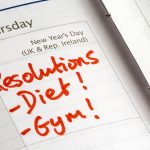
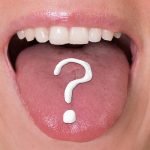






Great Article!
Great Article!
Your discussion on digestive
Your discussion on digestive enzymes caused me to wonder what can help with poor fat digestion and absorption as evidenced by loose and floating stools?
Digestive enzymes can
Digestive enzymes can certainly help with digesting fat, as can an ox bile supplement. However, keep in mind that as Jon points out, a perfect stool is not formed like a brick, but rather, a normal bowel movement is soft and unformed. It should break apart when it hits the water — or at least when flushed. This is not to be confused with diarrhea, which is characterized by water.
What is your opinion on the
What is your opinion on the drugs for erectile disfunction?
What is your opinion of
What is your opinion of cialis etc.?
Is Spirulina the same as Blue
Is Spirulina the same as Blue green algae? Is Flower pollen the same as bee pollen?
Thanks! Just don’t want to buy the wrong stuff? I love in Mexico and we have Spirulina here and lots and lots of bee pollen..
Yes, they are different. I
Yes, they are different. I would search on each one on this site to learn about each one.
A caution with the oral use
A caution with the oral use of tea tree oil: it tends to be acidic, and if used undiluted tends to erode enamel. Similarly, nothing acidic should be retained in the mouth. I recommend litmus paper or other testing of any substances used regularly for dental hygiene.
Yes that’s true, but no one’s
Yes that’s true, but no one’s actually recommending the undiluted use of tea tree oil. For oil pulling, Jon recommends one tsp of tea tree oil per 8 oz of sesame or safflower oil. That’s a dilution of 48 to 1, which makes the acidity of tea tree oil a non issue.
I am changing my life around
I am changing my life around and want my family to be healthy. i would love to start receiving your newsletters.
Sounds great! Did you sign
Sounds great! Did you sign up for our newsletter and daily health tip at the top of the page?
Regarding oil pulling
Regarding oil pulling question #1 and whether fillings fall out when oil pulling… Your answer indicates they will not fall out, however after oil pulling with sesame oil only a couple times, I had 2 fillings come out. They were older fillings & I had some sensitivity with them so they may have been loose. It is important for people to know that oil pulling can cause fillings to come out though, even if maybe only loose ones.
Yes, you are correct.
Yes, you are correct. Likewise, eating ice cream, an apple, banana, pasta, yogurt, or virtually any food item can cause a loose filling to fall out. If your filling is loose, it is best to just get it fixed.
In regards to the oil pulling
In regards to the oil pulling, would it be good for extremely dry mouth due to severe anxiety? I need something to help because it has become painful and all consuming in my life. Prescription medication just seems to make it worse. Thanks for any help you can give.
It doesn’t hurt to try. Do a
It doesn’t hurt to try. Do a search on our site about stress and anxiety because there are many natural remedies that can help reduce anxiety.
Jon Barron’s Digestive Enzyme
Jon Barron’s Digestive Enzyme product has no HCL in it according to his recommendation that any hydrochloric acid should be taken 30 to 45 minutes after eating and taking his Digestive Enzyme product. Since his Digestive Enzyme product is vegetarian in nature, and since vegetarian enzyme formulas
on the market, contain no HCL in them, does he recommend taking any HCL 30 to 45 minutes after someone would take his Digestive enzyme product? He does cite, in some of his transmittals, the HCL is needed to digest proteins. But he has protease enzymes (pectinase, etc.) in his formula; does this mean that one DOES NOT need to take the HCL 30 to 45 minutes after he or she takes his digestive enzymes?
HCL doesn’t actually digest
HCL doesn’t actually digest proteins; it denatures or “unfolds” them so that proteolytic enzymes such as pepsin can gain access to them and digest them. In other words, HCL and proteolytic enzymes don’t duplicate each other; they complement each other. That said, you only need to take supplemental HCL if you’re not producing enough on your own. For more, check out: http://www.jonbarron.org/article/your-stomach-part-1.